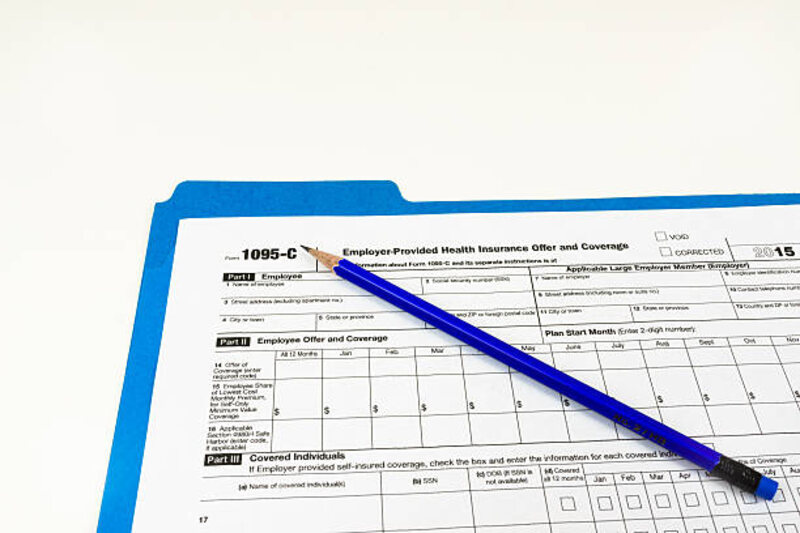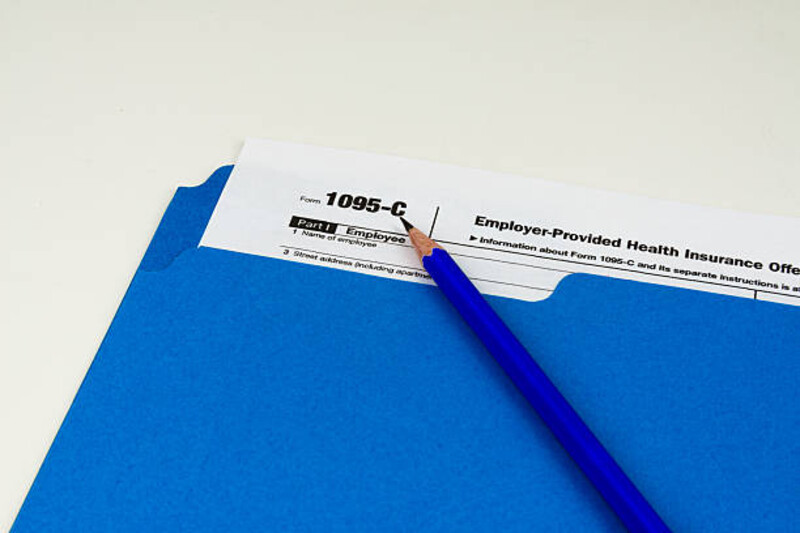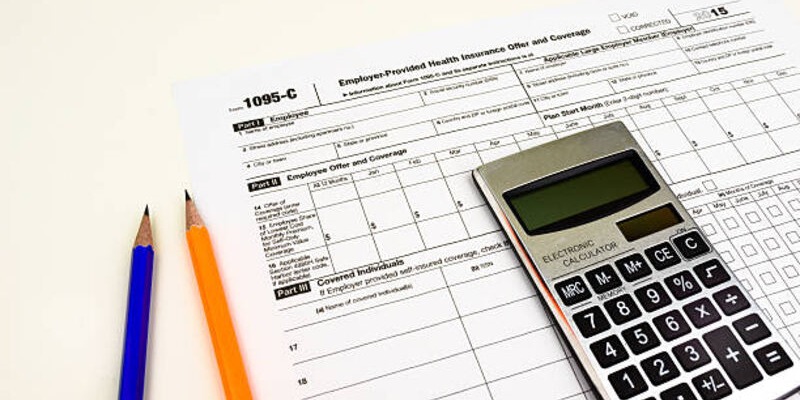Form 1095-C: Definition, Uses, and Tax Filing Requirements Explained
Jan 07, 2024 By Triston Martin
In the intricate world of tax filing, staying informed about the various forms and documents is crucial. One such form that plays a pivotal role in tax compliance is Form 1095-C. In this article, we will delve into the definition, uses, and tax filing requirements associated with Form 1095-C to provide you with a comprehensive understanding of its importance in the tax landscape.
Understanding Form 1095-C:
Form 1095-C, also known as the Employer-Provided Health Insurance Offer and Coverage, is a tax document provided by employers to their employees. This form is specifically related to the Affordable Care Act (ACA), which mandates that certain employers must offer health insurance coverage to their full-time employees and report the details of this coverage to the Internal Revenue Service (IRS).
The Purpose of Form 1095-C:
Form 1095-C serves as a vital tool in conveying relevant details about the health insurance coverage provided by employers to their employees. Its primary objective is to help individuals assess if they were offered minimum essential coverage (MEC) and determine their eligibility for premium tax credits. By furnishing this information, the form enables a comprehensive understanding of one's healthcare options and financial considerations.
Who receives Form 1095-C?
Employers subject to the ACA's employer mandate are required to send Form 1095-C to all full-time employees. This encompasses employers with 50 or more full-time employees, as well as select smaller employers offering self-insured health insurance plans.
Reading and Interpreting Form 1095-C:
Form 1095-C is divided into three parts, with each section serving a different purpose. Part I provides personal information about the employee, including their name, social security number, and contact details. In contrast, Part II lists the months in which the employer offered health insurance coverage and whether it was provided to the employee's dependents.
The Importance of Form 1095-C for Employees:
Form 1095-C is a crucial document for employees as it serves as proof of their health insurance coverage. This form can be used to verify if an individual was offered MEC and determine any premium tax credits they may be eligible for, which helps in filing accurate tax returns.
The Employer's Role in Form 1095-C:
Employers play an essential role in the accuracy of Form 1095-C, as it is their responsibility to provide the necessary information to their employees and the IRS. This includes reporting accurate details about health insurance coverage offered, including any changes made throughout the year.
Errors and Corrections in Form 1095-C:
In case of any errors or missing information on Form 1095-C, it is the employee's responsibility to notify their employer. Employers must then issue a corrected form within 30 days of being notified. Employees should review their form carefully and reach out to their employer for further clarification if needed.
Uses of Form 1095-C:

- Documentation of Health Coverage:
- The primary purpose of Form 1095-C is to document the health insurance coverage offered by employers to their employees.
- Employees can use this form to verify that they had minimum essential coverage, as required by the ACA, and avoid potential penalties for lacking health insurance.
- Assessment of Premium Tax Credits:
- Individuals who purchase health insurance through the Health Insurance Marketplace may be eligible for premium tax credits.
- Form 1095-C provides information necessary for employees to determine if they qualify for these credits based on the coverage offered by their employer.
- Reporting to the IRS:
- Employers are required to submit Form 1095-C to the IRS to ensure compliance with the ACA.
- This form helps the IRS monitor employer-sponsored health coverage and enforce the individual mandate.
Tax Filing Requirements:
- Employee Responsibility:
- Employees must retain Form 1095-C for their records and use the information provided when filing their federal income tax returns.
- While the form is not required to be attached to the tax return, it serves as crucial documentation to support the individual mandate compliance.
- Employer Responsibility:
- Employers are responsible for furnishing Form 1095-C to their employees by the IRS deadline, usually around the end of January.
- Non-compliance with the reporting requirements may result in penalties for the employer.
- IRS Verification:
- The IRS uses the information on Form 1095-C to verify the accuracy of an individual's claim for premium tax credits and ensure compliance with the ACA.
Navigating Form 1095-C: Tips for Employers and Employees

As the tax season approaches, both employers and employees should be well-versed in the intricacies of Form 1095-C. Here are some additional insights to help navigate this crucial tax document:
For Employers:
- Accurate Reporting is Key:
- Employers must ensure that the information on Form 1095-C is accurate and reflects the health coverage offered to each employee.
- Any discrepancies or inaccuracies may lead to IRS inquiries and potential penalties.
- Distribution Deadlines Matter:
- Form 1095-C must be distributed to employees by the end of January each year.
- Employers should adhere to this deadline to avoid penalties and to provide employees with ample time to review the information before filing their taxes.
- Electronic Filing Options:
- Employers can opt for electronic filing of Form 1095-C, streamlining the process and reducing the risk of errors associated with manual paper filing.
- Electronic filing is encouraged by the IRS for its efficiency and accuracy.
- Communication is Key:
- Employers should communicate with their employees about the significance of Form 1095-C and its role in tax compliance.
- Providing clear explanations can help alleviate any concerns or confusion among employees.
For Employees:
- Review for Accuracy:
- Upon receiving Form 1095-C, employees should carefully review the information provided.
- If there are any discrepancies or missing details, employees should contact their employer promptly for clarification and resolution.
- Understanding Codes on Form 1095-C:
- Form 1095-C includes specific codes that describe the type and affordability of the health coverage offered.
- Employees can refer to the instructions provided by the IRS to interpret these codes and ensure they understand the implications for their tax filing.
- Seek Professional Advice if Needed:
- Tax situations can be complex, and employees with unique circumstances may benefit from seeking professional tax advice.
- Consulting with a tax professional can help individuals navigate the nuances of Form 1095-C and ensure accurate tax filing.
- Retain Documentation:
- Form 1095-C should be retained with other tax documents for a minimum of three years.
- Having a comprehensive record of health coverage is essential in case of an IRS audit or any future inquiries.
Conclusion:
Form 1095-C is a crucial document that supports the implementation of the Affordable Care Act and guarantees access to essential health coverage. Both employers and employees must understand its purpose and comply with the associated tax filing requirements. Given the ever-changing nature of tax laws, it is vital to stay informed about these forms and their implications to ensure a seamless tax-filing experience. Form 1095-C not only serves as proof of health coverage but also contributes to the integrity and effectiveness of the healthcare system in the United States.
-
 Investment May 17, 2024
Investment May 17, 2024Understanding Stock Chart Patterns
Learn to identify crucial patterns in stock charts efficiently for financial insights and better decisions.
-
 Investment May 13, 2024
Investment May 13, 2024The Ultimate Guide to Retirement Options: IUL, IRAs, vs. 401(k)s
Exploring Indexed Universal Life (IUL), IRAs, and 401(k)s to determine the ideal retirement solution for your needs.
-
 Investment Feb 04, 2024
Investment Feb 04, 2024Buy Mutual Funds Online
Online is the easiest method to invest directly into Mutual Fund schemes, and you can save commissions too. You can make an online investment through the fund's website, RTA's website, or an online fintech platform. Investing directly on a fund's website requires managing multiple log-ins.
-
 Taxes Jan 07, 2024
Taxes Jan 07, 2024Form 1095-C: Definition, Uses, and Tax Filing Requirements Explained
Understand what Form 1095-C is, its uses and tax filing requirements. Our guide provides a comprehensive overview to assist you during tax season.
